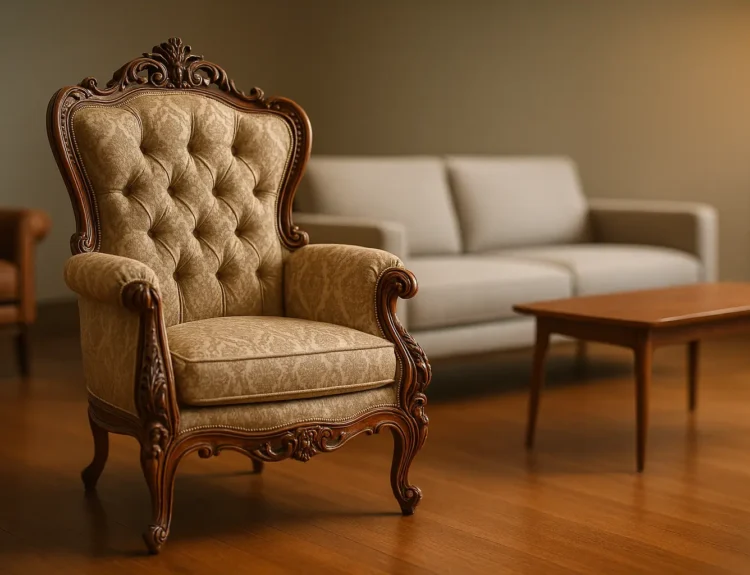In an era where inclusivity is at the forefront of societal evolution, it is crucial that our living spaces reflect this commitment. As we step into 2025, the concept of designing for neurodiversity is gaining momentum, emphasizing the need for environments that cater to everyone, including individuals with neurodivergent profiles such as autism.
We live in a world with diverse sensory needs, and our homes—our personal sanctuaries—should be designed with this diversity in mind. This article delves into creating spaces that are both aesthetically pleasing and functional for all, exploring how we can design with empathy and insight to enhance daily life.
Understanding Neurodiversity and Its Impact on Design
Neurodiversity acknowledges that neurological differences are a natural part of human diversity. From autism to ADHD, these variations can influence how individuals interact with their environments. As designers, we must embrace these differences to create inclusive spaces.
Lighting, colors, textures, and sounds play a significant role in how a room is perceived. For some, bright lights or loud patterns can be overwhelming, while others may find them engaging. It is crucial to strike a balance that accommodates various sensory preferences.
We approach designing for neurodiversity by first understanding the unique needs of individuals. This involves collaboration and empathy, going beyond aesthetic considerations to include functional design elements that enhance well-being. Incorporating adjustable lighting or providing quiet zones can make a significant difference.
We must also consider the environment holistically. How do different materials influence sensory experiences? Is there enough natural light? Can spaces be adapted easily to suit changing needs? By addressing these questions, we create spaces that adapt to, rather than dictate, the lifestyle of their occupants.
Practical Design Elements for Neurodiverse Spaces
Turning theory into practice involves implementing tangible design strategies that cater to diverse needs. Consider the layout of a room. Open spaces can promote a sense of freedom but may also lead to sensory overload for some. Designers can introduce partitions or cozy corners to offer choice and control over one’s environment.
Lighting is another critical factor. Adjustable fixtures allow individuals to modify brightness and warmth, catering to personal preferences and needs. Natural light, when accessible, should be maximized, as it can improve mood and focus.
Color schemes play a pivotal role in the perception of space. While bold colors can be stimulating, softer, muted palettes may offer a calming effect. It is essential to consider the specific sensory needs and preferences of those who will inhabit the space.
Textures and materials also contribute to the sensory experience. Opting for soft, tactile surfaces rather than hard, reflective ones can create a more welcoming atmosphere. The choice of furnishings should consider both comfort and sensory impact, ensuring they do not become a source of discomfort or distraction.
The idea is to create flexible environments that allow for personalization. By providing options, we empower individuals to shape their surroundings in ways that best support their well-being. {image_content}
Incorporating Technology for a Personalized Experience
In today’s tech-driven world, technology can transform how we interact with our home environments. Smart home systems offer personalized sensory experiences, allowing individuals to tailor their surroundings with ease.
Voice-activated devices can assist in adjusting lighting, temperature, and even sound levels. These tools cater to various preferences, providing neurodivergent individuals with autonomy over their spaces. Touchscreen panels or apps can offer visual simplicity, reducing complexity and enhancing accessibility.
Consider implementing sensory feedback systems that alert individuals to changes in their environment. For instance, gentle vibrations or visual cues can notify users of doorbell rings or incoming calls, ensuring they remain connected without feeling overwhelmed.
Furthermore, assistive technologies can aid in everyday tasks, from scheduling to communication, seamlessly integrating into the home setup to support autonomous living. By embracing these advancements, we can design spaces that not only meet functional needs but also enrich the daily lives of their inhabitants.
Ultimately, integrating technology in interior design allows for greater customization and adaptability, fostering environments that truly resonate with the diverse needs of their occupants.
The Role of Designers in Creating Inclusive Homes
As designers, we possess the unique ability to shape environments that not only appeal aesthetically but also support varied needs. Our role extends beyond creativity; it encompasses a responsibility to understand the nuances of neurodiversity.
To design inclusive homes, we must engage in dialogue with neurodivergent individuals, gathering insights into their experiences and preferences. This collaborative approach ensures that the resulting spaces are both functional and empathetic.
Training and education within the design community are vital. By raising awareness and fostering understanding, we can equip designers with the tools needed to develop inclusive solutions. Workshops, seminars, and continued learning opportunities can bridge the gap between design theory and practical application.
Moreover, sourcing materials and furnishings that prioritize sensory comfort over aesthetics alone can make a significant impact. Partnerships with manufacturers focused on inclusive design can further this cause, ensuring accessibility and comfort are at the forefront.
In our pursuit of crafting inclusive environments, let us be guided by empathy, innovation, and a commitment to understanding the unique perspectives of every individual. By doing so, we can create homes that truly reflect the diversity of human experience.
As we look ahead, designing for neurodiversity represents a shift towards more inclusive and empathetic living spaces. By embracing the diverse sensory needs of individuals and incorporating flexibility into design, we create homes that offer safety, comfort, and empowerment.
Through thoughtful interior design, we can transform the way neurodivergent people experience their environments. Our commitment to this cause is not just about aesthetics; it’s about fostering a world where everyone feels valued and understood.
Let’s continue to innovate and inspire, championing designs that resonate with every aspect of our shared humanity. Together, we can build futures that are brighter, more inclusive, and profoundly enriching for all.
FAQ
What is neurodiversity, and why is it important in home design?
Neurodiversity refers to the variety of ways in which human brains can function and process information. It emphasizes the understanding that neurological differences such as autism, ADHD, dyslexia, and others are normal variations of the human experience. Designing homes with neurodiversity in mind ensures that spaces cater to a broader range of sensory needs and cognitive preferences, promoting comfort and functionality for everyone.
How can I create a sensory-friendly environment at home?
To create a sensory-friendly environment, consider using soft lighting, calming colors, and minimizing background noise. Incorporate textures and materials that are soothing to touch, and allow for areas where individuals can retreat for peace and quiet. Adjustable features, such as dimmable lights and variable sound systems, can also help accommodate different sensory preferences.
What are some design elements to consider for individuals with autism?
For those with autism, it’s beneficial to design spaces with clear organization and minimal clutter to reduce overstimulation. Use visual cues, like color-coded labels or signs, to provide structure. Incorporate quiet zones for retreat and ensure that any sensory tools or items are easily accessible. Pay attention to acoustics and choose materials that minimize echo and sound amplification.
How can home design support individuals with ADHD?
For individuals with ADHD, creating a structured and organized environment can be very supportive. Utilize storage solutions to minimize clutter and encourage focus. Designate specific areas for work and relaxation, using distinct color schemes or dividers to differentiate spaces. Incorporate movement-friendly furnishings, like rocking chairs or standing desks, to cater to kinesthetic needs.
Are there specific color schemes that are recommended for neurodiverse-friendly home design?
Neutral and calming colors are often recommended for neurodiverse-friendly designs, as they can help reduce sensory overload. Soft blues, greens, and earth tones are generally soothing and promote relaxation. However, it’s essential to consider individual preferences, as some may find bright or contrasting colors energizing and uplifting. Personalization is key to achieving the right balance.


